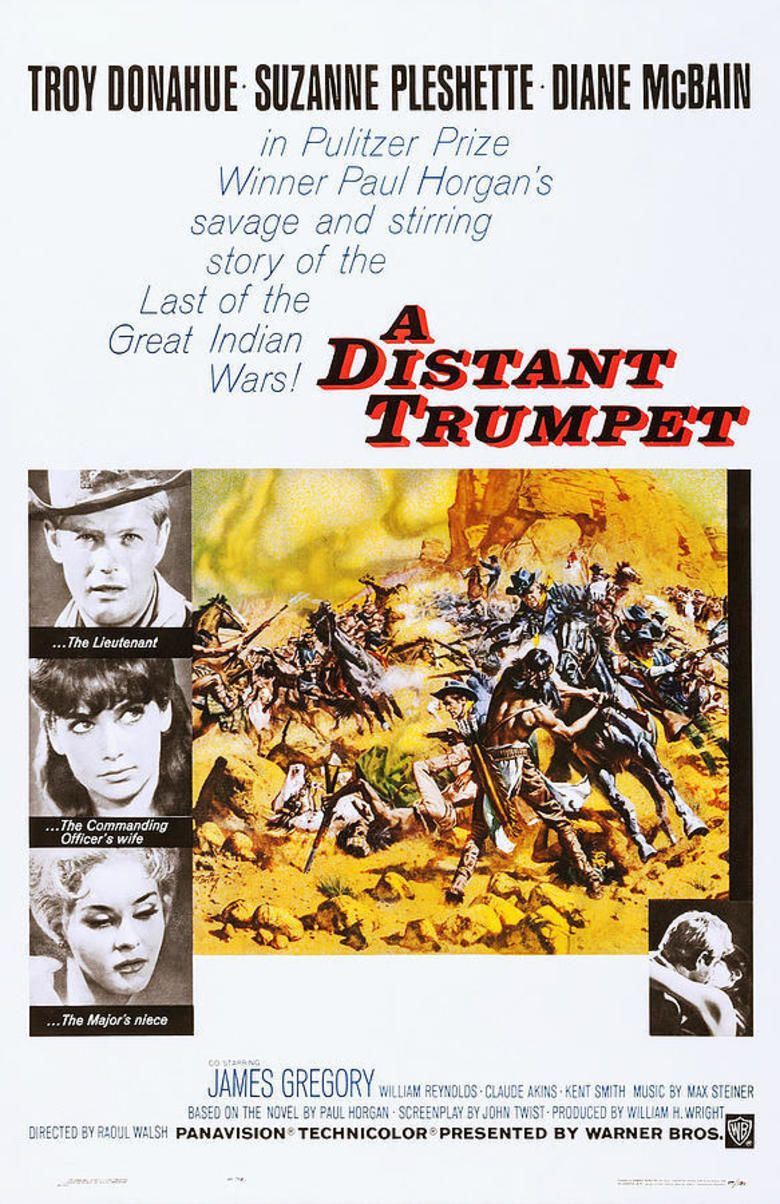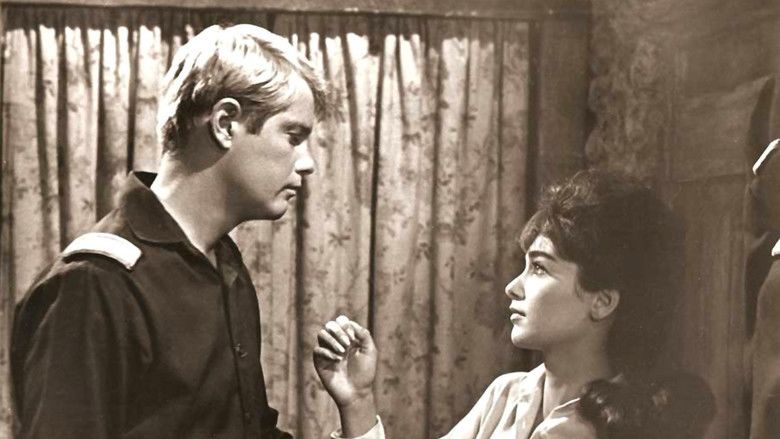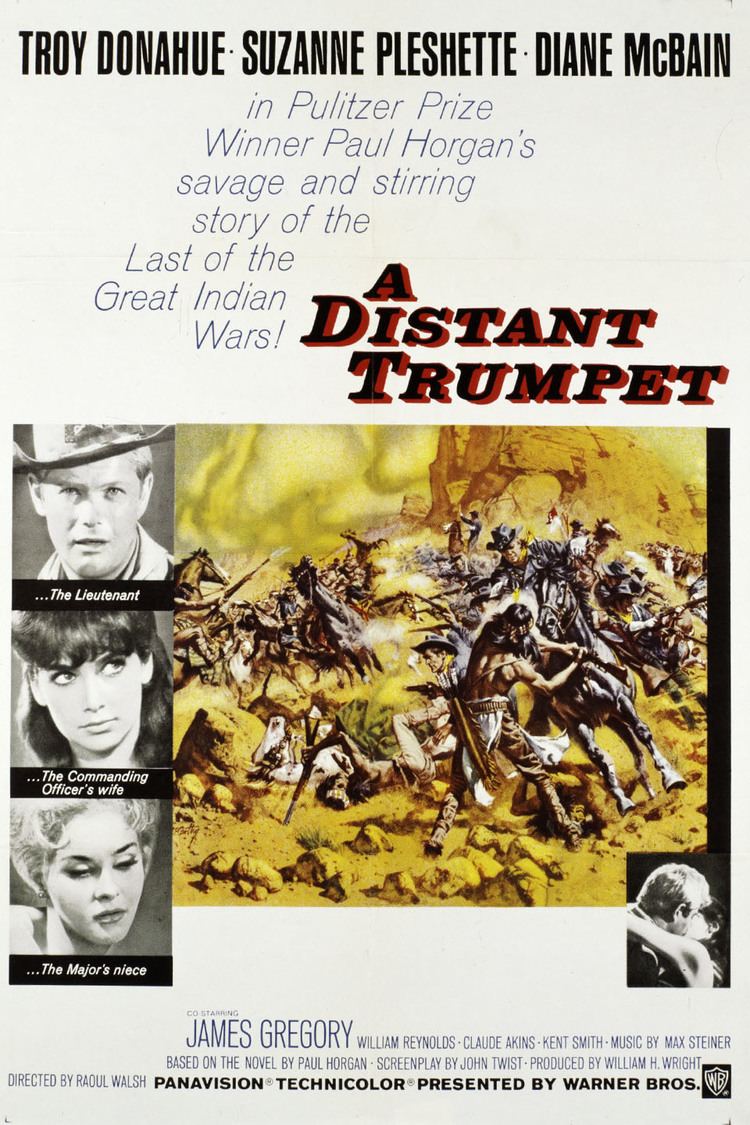A Distant Trumpet
6.4 /10 1 Votes
Duration Language English | 6.4/10 IMDb Cinematography William H. Clothier Country United States | |||||||||||||||||||||||||||||||||
 | ||||||||||||||||||||||||||||||||||
Release date May 27, 1964 (1964-05-27) Writer John Twist (screenplay), Richard Fielder (adaptation), Albert Beich (adaptation), Paul Horgan (novel) Cast (2nd Lt. Matthew 'Matt' Hazard), (Mrs. Kitty Mainwarring), (Laura Frelief), (Maj. Gen. Alexander Upton Quaint), (1st Lt. Teddy Mainwarring), (Seely Jones) Similar movies The Lord of the Rings: The Two Towers , Cowboys & Aliens , Raising Arizona , Red Sun , Ulzana's Raid , They Call Me Renegade Tagline From Pulitzer Prize winner Paul Horgan's epic novel of Indians and Indian-fighters | ||||||||||||||||||||||||||||||||||
A distant trumpet original theatrical trailer
A Distant Trumpet is a 1964 American Western film, the last directed by Raoul Walsh. It stars Troy Donahue, Suzanne Pleshette and Diane McBain.
Contents
- A distant trumpet original theatrical trailer
- A distant trumpet 1964 official trailer troy donahue suzanne pleshette western movie hd
- Plot
- Cast
- Original Novel
- Production
- Critical reception
- References

The screenplay by John Twist, Albert Beich and Richard Fielder is based on the 1960 novel of the same name by Paul Horgan.

A distant trumpet 1964 official trailer troy donahue suzanne pleshette western movie hd
Plot
In 1883, U.S. Army Cavalry lieutenant Matthew Hazard, newly graduated from the military academy at West Point, is assigned to isolated Fort Delivery on the Mexican border of the Arizona Territory, where he meets commanding officer Teddy Mainwarring's wife Kitty, whom he later rescues from an Indian attack.
Soon after a new commander, Major General Alexander Quaint, (James Gregory), takes charge. When his efforts to capture Chiricahua Apache chief War Eagle fail, he orders Hazard into Mexico to cajole the Indian chief into surrendering. Hazard convinces War Eagle to return with him with the promise the Indians will be provided a safe haven at a reservation in Arizona. En route to the fort, they encounter Major Miller, who orders the Indians be sent to Florida. Hazard and Quaint journey to Washington, D.C. to request U.S. War Department government officials to reverse their decision and allow Hazard to keep his word to War Eagle.
Cast
Original Novel
The film was based on a 629-page novel, published in 1960, which was based on extensive historical research. The New York Times called it "the finest novel yet on the Southwest in its settling." Another reviewer for the same paper called it a "first rate historical novel."
Production
Warners bought the film rights and announced they would make the film in 1960 with James Woolf and Jack Clayton as producer and director, Laurence Harvey as star, and Alan Le May to do the script. It would be made for Challet Productions, Harvey's production company.
Then Burt Kennedy was listed as writer; then Clayton was replaced by Leslie H. Martinson. Eventually, the film was set up with an entirely new producer, director and writer.
Significant changes were made from Horgan's novel in reversing the character traits of the female leads, making Kitty Mainwarring the object of Hazard's affections and Laura the negative personality; and altering the narrative's climax (and history), by reversing the fate of the Apaches from their historic removal to Florida and restoring the male protagonists to full duty, thereby negating Hazard's point-of-honor refusal of the congressional Medal of Honor and resignation from the Army, which was the basis for the entire storyline.
Shooting took place in September 1963. Location filming occurred in Flagstaff, Arizona and Gallup, New Mexico.
Critical reception
In his review in the New York Times, Bosley Crowther called the film:
A deadly bore...so dull you even lose interest in watching the horses and the stunt men doing their stuff...Seldom has there been a Western picture on which so much money was spent...from which so little excitement, energy or colorfulness exudes. It's as though Mr. Walsh and everybody were bitten by tsetse flies and went through the business of shooting the picture in a state of drowsiness."
Variety said:
The stunning location terrain of the Red Rocks area of New Mexico and Arizona's Painted Desert gives the production a tremendous pictorial lift. Max Steiner's score is a driving dramatic force but the use of the main theme seems a trifle excessive. The picture would benefit from a lot more pruning by editor David Wages.
Time Out New York feels that despite "an average script and a colourless lead performance from Donahue" the film "[emerges] as a majestically simple, sweeping cavalry Western, a little reminiscent of Ford in mood and manner. Brilliantly shot by William Clothier, it tends to have its cake and eat it by indulging in a spectacular massacre before introducing the liberal message, but still goes further than most in according respect to the Indian by letting him speak his own language (with subtitles)."
Peter Bogdanovich called the film:
One of Walsh's weakest pictures, caused mainly by an intolerably bad cast and a predictable script. Whenever the director is allowed to linger on shots of horses and riders, Indians and cavalry, and on their battles, he shows his vitality, personality and strength. Otherwise, his efforts are hopeless against the talentless players and the hopeless words they are required to speak.
References
A Distant Trumpet WikipediaA Distant Trumpet IMDbA Distant Trumpet themoviedb.org
